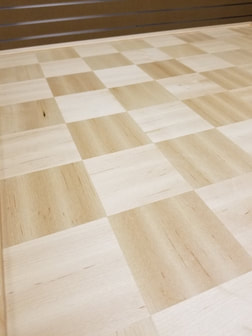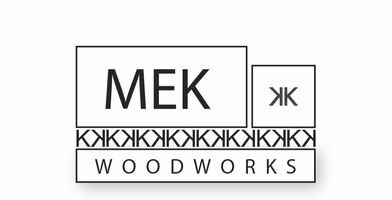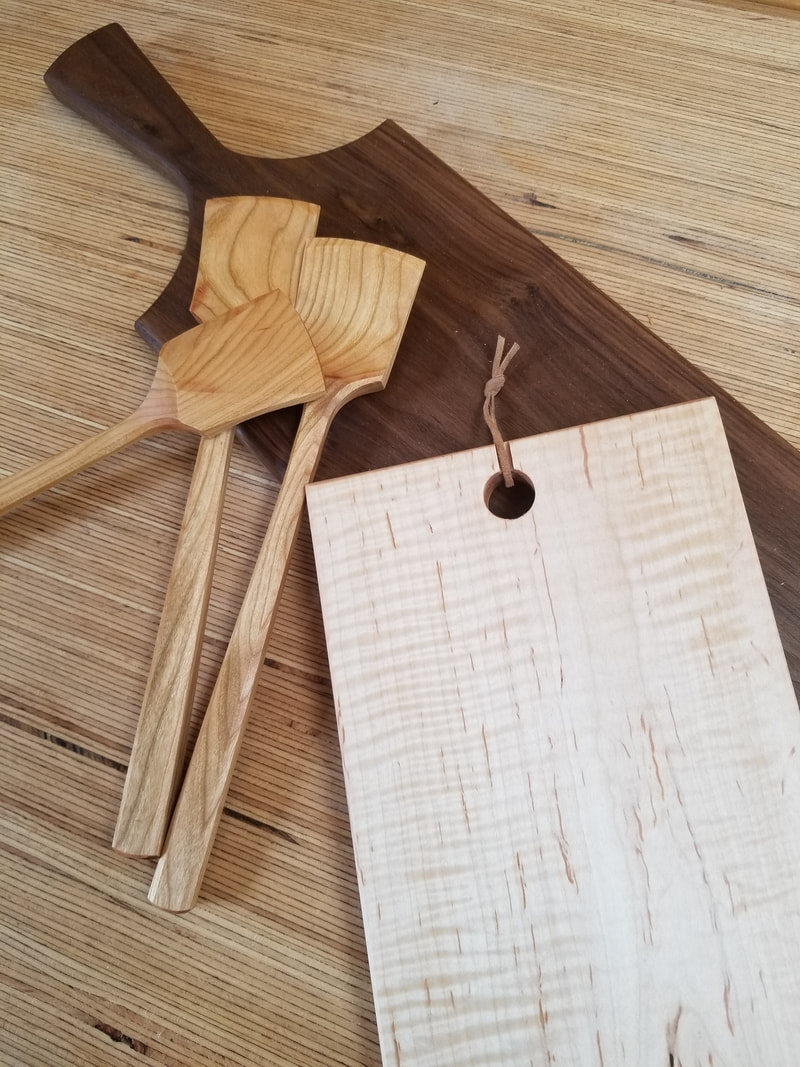 By orienting the grain 90º in adjacent squares, Amanda created a chessboard using a single species. By orienting the grain 90º in adjacent squares, Amanda created a chessboard using a single species. I first met Amanda Russell (@sawdustwoman) when teaching at The Austin School of Furniture and Design in 2019. She was my shop assistant, and did a great job. She was my assistant again this year and did another outstanding job prepping materials, setting up machines, and putting up with me. She also introduced me to Electric Jellyfish IPA from Pinthouse Pizza. Thanks for that! When she’s not working at the school, she’s helping Philip Morley keep his act together, and does amazing work for him. Her skill level is truly impressive given that she started woodworking about 5 years ago! What got you started in woodworking? My grandfather and Dad are both self-taught woodworkers. Growing up, I was able to observe both of them work in their home shops, which instilled a love for creativity and working with my hands. I never thought to try woodworking for myself until I was in my early twenties, my first project was woodturning a muddler (I was bartending at the time), and was immediately hooked. After attempting to teach myself, I realized a classroom environment the best and most efficient way for me to learn, so I moved to Austin to take woodworking courses at community college. It turned out to be one of the best decisions I’ve made. What are the 3 most important things you’ve learned in woodworking? Don’t let one mistake dictate the rest of your day, don’t let the potential of failing hold you back, and grain direction can make or break an otherwise really beautiful piece. Why woodworking? What does it give you that other activities and crafts don’t? As someone who loves many creative processes, woodworking was a craft that fulfilled the structure and critical thinking I also enjoy. What’s something that everyone should know? Embracing who you are is a huge part of whatever you do. As a woman in a male-dominated field, I spent a lot of time and the early part of my career making myself small and wanting people to only see me for my abilities. Ultimately, I realized this not only held me back, but potentially hindered much needed progress within this craft. It is a continuous work in progress, but has made me much more confident in my work, and also perceptibly changed interactions in my work and day-to-day life. I'm glad that you decided not to make yourself small anymore. How'd you do that? Making myself seen and heard came in the form of taking risks with design and the process, putting my "mark" on things when I knew things could be improved or changed. At the time this shift happened, I was l asked "Do you see yourself as a threat, being a woman in a man's shop?" It was then I realized some percieved me simply working hard and getting ahead as an intrusion, when others were rewarded for that behaviour. I can't tell you how many times I've been told "It is so cool you woodwork, because you're a woman" I accepted and knew my role was to break through that bias, walk in a shop and work despite being questioned. Sharing my journey openly, so current women in the field are encouraged and women entering this craft aren't discouraged by that bias. Leading by example, but also addressing the issue openly. My business name, Sawdust Woman, actually came from consciously taking on this role. I had another woman tell me it made her feel like a superhero, and that's exactly what I had hoped for. Why do you make the specific things that you make? Learning new skills dictates a lot of my work. My most recent project was a chessboard created with parquetry from shop made veneer, two new techniques I had never attempted by myself before. Who has had the greatest impact on your woodworking? Philip Morley. He’s an incredible craftsman, designer, and instructor, who I’m very fortunate to call a mentor. Getting to witness even some of his process on design and execution is one of the most crucial things I’ve had to help my journey (Sometimes, I go home with headaches trying to wrap my brain around how he came up with a jig. Haha) From woodworking to teaching, He has made a huge impact in what I do. Have you incorporated lessons learned in other parts of your life into your woodworking? Absolutely. Woodworking requires understanding that you can do everything just right: selection, acclimating, milling, and sometimes it just won’t work. Sometimes you put hours into something, almost get to the finish line, just to realize you need to start all over or change your approach completely. Patience, adaptability, and determination. What’s the one thing you’d teach another woodworker to help them improve their skills, understanding or design? I was taught recently to “Draw and design first, then worry about joinery later". I would get so hung up on the process that I was limiting design to very restricted parameters, and just frustrating myself.
0 Comments
Your comment will be posted after it is approved.
Leave a Reply. |
AuthorI love furniture design, and smart techniques. This blog is about both. Archives
August 2020
Categories |


 RSS Feed
RSS Feed